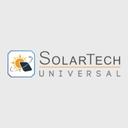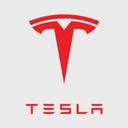Solar energy can help you reduce your power bill over the long haul, even if they are a bit more expensive to set up initially. After all, you’ll be self-sustainable once you get them up and running! Unfortunately, most major solar panel manufacturers use overseas parts and labor to make their products. So, we set out to find all of the solar panels made in the USA. Below are our findings.
Complete List of Solar Panel Brands Made in the USA

Mission Solar is making a range of solar panels from its headquarters in San Antonio, Texas. Their panels have the highest PTC rating among all American solar manufacturers; basically, just a test to measure performance under real-life conditions. The MSE PERC 60 is their most popular panel – it’s sleek and compact and features their PERC technology that essentially allows for more energy generation than traditional panels, which saves you money in the end. Mission Solar also has a 25-year warranty on all their panels and keeps more than 80% effectiveness after 25 years. You have a few different wattage options to choose from that range from 300 watts to 400 watts, which should be plenty for most homes if you get the correct number of panels.

SolarTech Universal has an industry-leading 30-year warranty, which provides a huge level of protection should anything happen to your solar panels. SolarTech emphasizes its manufacturing process, too, using what they call “SmartWire technology” to make a more light-absorbent solar cell. Combined with an increased number of contact points across the panel, that SmartWire tech ultimately adds a ton of low-light power to the panel, which helps lower your overall cost per kilowatt-hour. SolarTech Universal panels are locally assembled in their manufacturing facility near Riviera Beach, Florida headquarters.

Rounding out our list is Tesla, which partnered up with Panasonic to make solar panels for homes that feature smart capabilities. They can connect directly to the Tesla Powerwall, which is essentially a battery for your home that can provide power during a grid outage. Additionally, your solar system hooks up to the Tesla mobile app, which gives you tons of insights into your solar panels’ performance and energy usage. Tesla has also put thought into their mounting system – their panels have a low-profile design and require 30% fewer anchor points than competitors. Tesla’s solar panels are made at their Buffalo, New York factory.
How To Find Solar Panels Made in the USA
Although American-made solar panels can be more expensive to purchase initially, they often have a longer lifespan, are more efficient, and can provide a better return on investment in the long run.
Here is our guide to help you find American made solar panels.
What Does “Made in the USA” Mean?
Understanding what “made in the USA” means is the first step in finding US-made solar panels. According to the Federal Trade Commission (FTC), “made in the USA” means “all or virtually all” of the product is made in the United States. This means everything from sourcing materials to product assembly must be done in the USA.
Check out our helpful research on determining if a product is “made in the USA” to learn more.
Materials
To find solar panels made in the USA, research the raw materials used to make the product. Knowing where these materials come from is the first step to finding genuine American-made solar panels.
Glass
Glass is used in solar panels as a casing sheet and protects the solar cells. Although glass production is significant in the USA, it is hard to beat glass manufacturing giants like China. Because China produces around a quarter of the world’s glass, the glass you see on a product is more likely to be sourced overseas. Since there are a limited number of big glassware companies in the USA, you need to work a bit harder to ensure the glass is sourced domestically to find US-made solar panels.
Aluminum
The metal frame on solar panels is usually made of aluminum. China is the world’s largest aluminum producer, and the USA ranks 9th in the world of aluminum production. So although the USA does produce some aluminum, it falls quite far behind other countries. Since the US doesn’t have a significant aluminum industry, you need to be diligent in double-checking the country of origin of the aluminum used in solar panels.
Polysilicon
Polysilicon is a major component in a solar panel’s manufacturing and is the first ingredient needed in the production chain to create the final solar cells. The USA produces only 5.6% of the world’s total supply of the material, while China produces a whopping 79%. While finding 100% USA-produced polysilicon is rare, it is not impossible. For this reason, you will need to work a bit harder to find solar panels entirely made in the USA.
Labeling
The next important step to finding US-made solar panels is paying attention to the label on the product. Because all imported products need to be labeled as such according to Title 19 Chapter 4 Section 1304 of the US code, finding USA-made solar panels is easy in theory if you look at the labels. When looking for an American-made product, you should look specifically for the FTC-protected “made in the USA” label.
However, unfortunately, the FTC does not do the best job of policing the usage of the label. There is no pre-approval process, so it’s up to the companies to determine whether or not their products meet the criteria to use this protected label. And as a consumer, if you ever come across a product that falsely uses this label, it is up to you to report them to the FTC.
There are a couple of other things to watch out for when looking at the label.
Pay close attention to the labels, as many companies use tricky phrases to make you believe the product is made in the USA. For example, a product labeled “made in America” does not mean the product is made in the USA. This is because America can include both Canada and Mexico. Other popular labels are “manufactured in the USA” and “designed in the USA.” Although they may seem synonymous with “made in the USA,” they mean only a portion of the manufacturing process takes place in the USA.
Other Tips
Here are a few more valuable tips that you can use to find US-made solar panels.
Don’t Be Fooled by the American Flag
Although a product may have the American flag on its label, this does not always mean it is made in the USA. The use of the American flag on products is not protected by law in the same way that using the phrase “made in the USA” is. So just because you see the flag, do not automatically assume the solar panel is made in the USA.
Check the Website
Before you buy your solar panels, it is a good idea to research the company that is selling them and the manufacturer that supplies them. The “About Us” pages on their websites should hold some helpful information on where the panels are made, and if they truly are made in the USA, this fact should be announced proudly.
Conversely, if you can’t find the country of origin listed on their website, it’s likely the solar panels are made overseas and imported.
Companies are not required to state the country of origin of their products when listed online or in advertisements, only on the physical product itself.
Call the Company
When in doubt, call the company. A representative should be able to answer all of your questions and provide you with the information you need to make an informed decision with your purchase.
Note on STC and PTC Test Performance
When you’re evaluating solar panels, look at the test performance for each major solar panel you research. There are two major tests: Standard Test Conditions (STC) and Photovoltaics for Utility Scale Applications Test Conditions (PTC).
STC testing is typically done in the factory after the panels come off the assembly line. A worker will hook up the solar panel to a measuring device and “flash” it with fake sunlight, recording performance values for voltage (volts), current (amps), and power (watts). These testing conditions are called “standard” because the same amount of light is tested every time – 1,000 watts per square meter – and the temperature is always the same at 77 degrees Fahrenheit. As you’ve probably thought by now, these testing conditions aren’t super representative of the real world. That’s where PTC testing comes in.
In PTC testing, the solar panels are heated up like they are in the sun. The testing temperature is slowly raised until it reaches 113 degrees Fahrenheit, and then a breeze blows across the panel set to 68 degrees Fahrenheit and a speed of 1 meter per second. The PTC test is particularly effective because as solar panels heat up, the voltage they can produce decreases, making them less effective. Tests like this one help answer the durability question.
What About SunPower and SolarWorld?
SunPower is a super popular U.S.-based solar panel manufacturer. Unfortunately, most of their Maxeon cell technology is made in Malaysia and the Philippines, and their panels are assembled in Mexico and France.
SolarWorld is another major name in the solar industry. They make a lot of panels in the United States but are headquartered in Germany and run a lot of their operations out of there, so we didn’t feel it appropriate to include them.
Along with these popular brands, here are some of the other companies we considered that didn’t make the cut due to product quality or foreign manufacturing:
- Hanwha Q CELLS (based in South Korea)
- SunRun (based in California)
- SunLux (based in California)
- Vivint Solar (based in Utah)
- LG Solar (based in South Korea)
- Jinko Solar (based in China)

